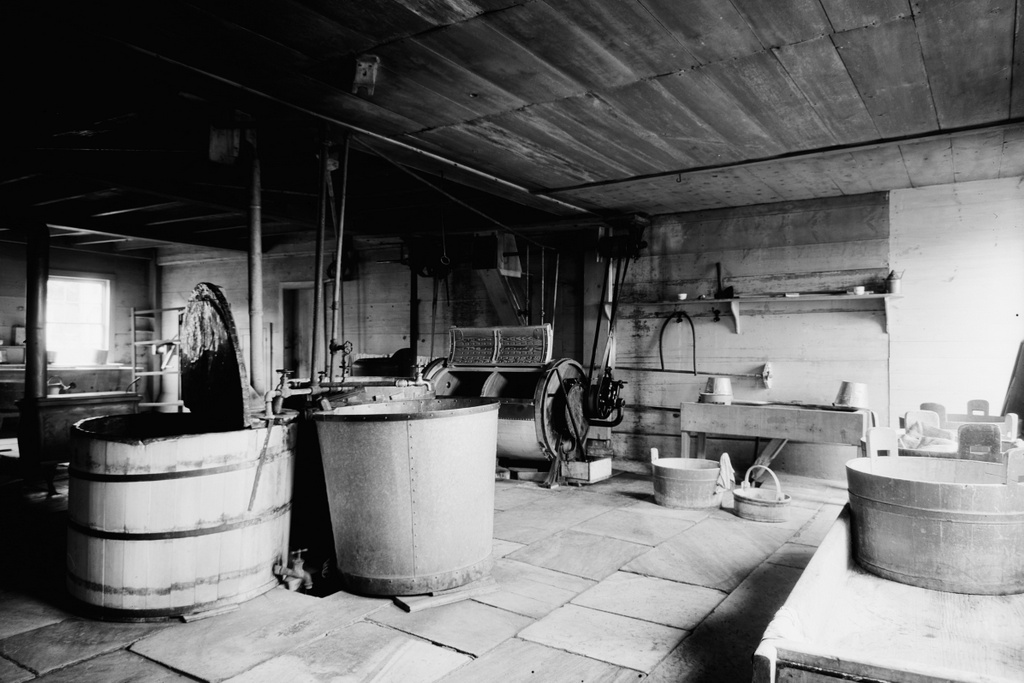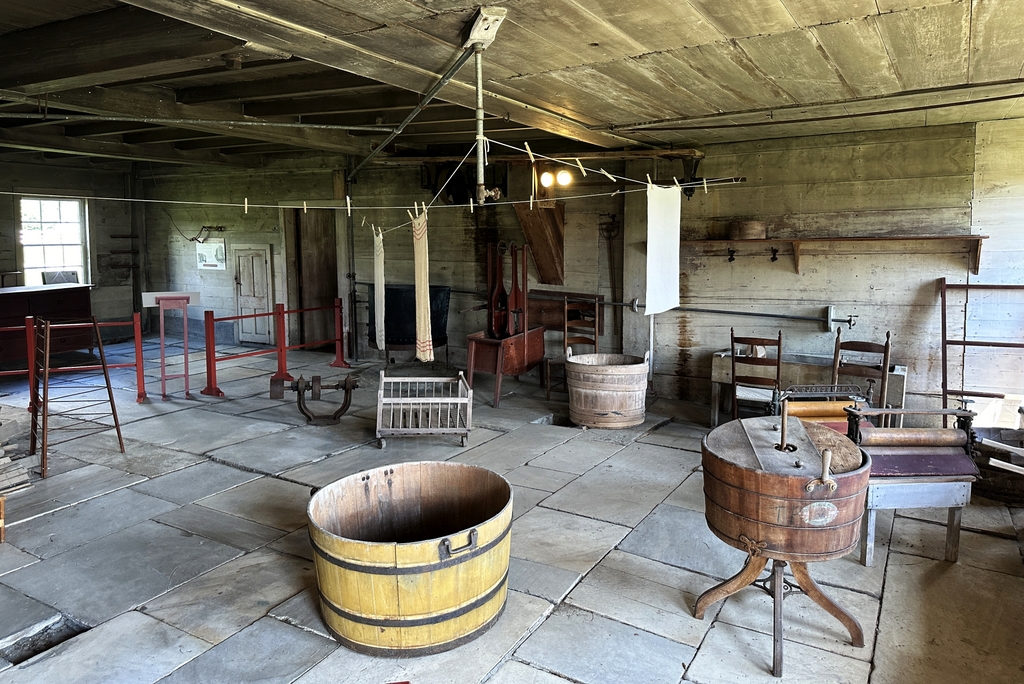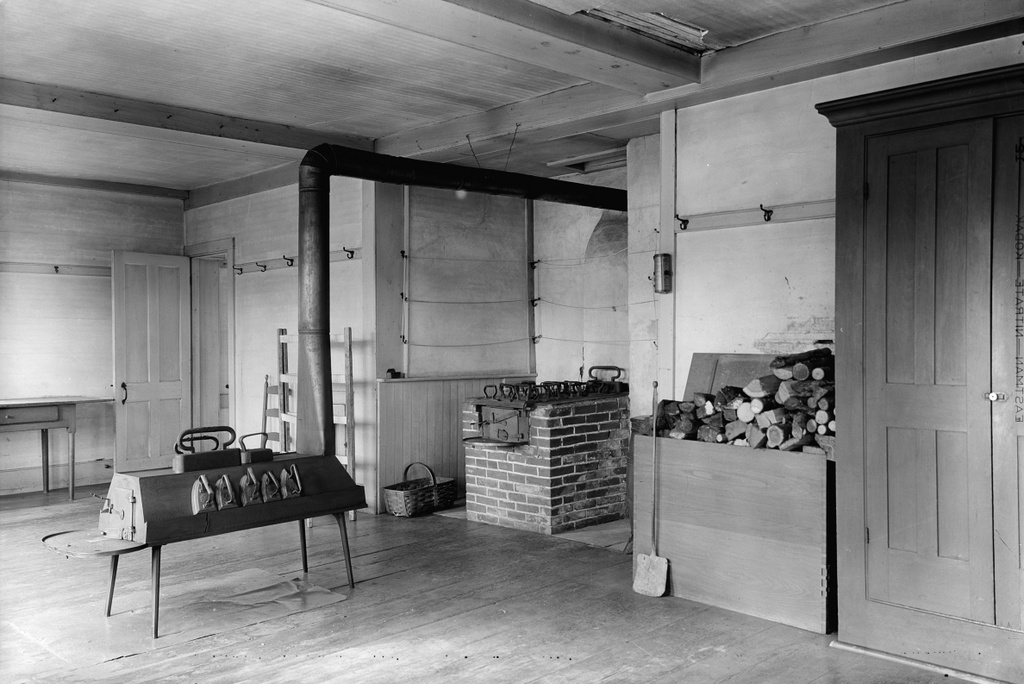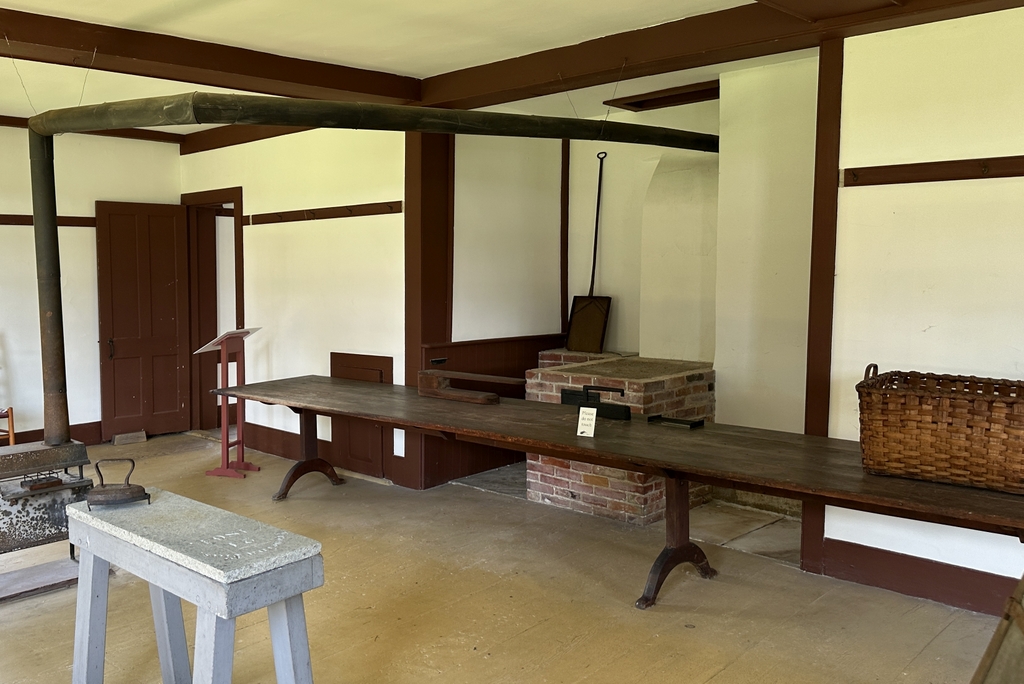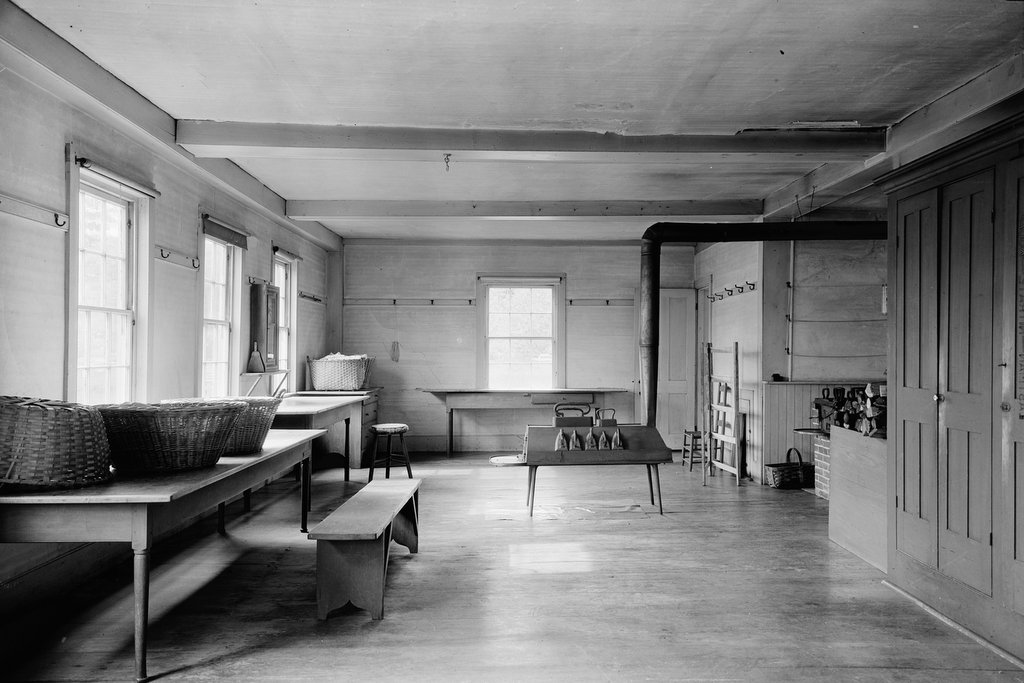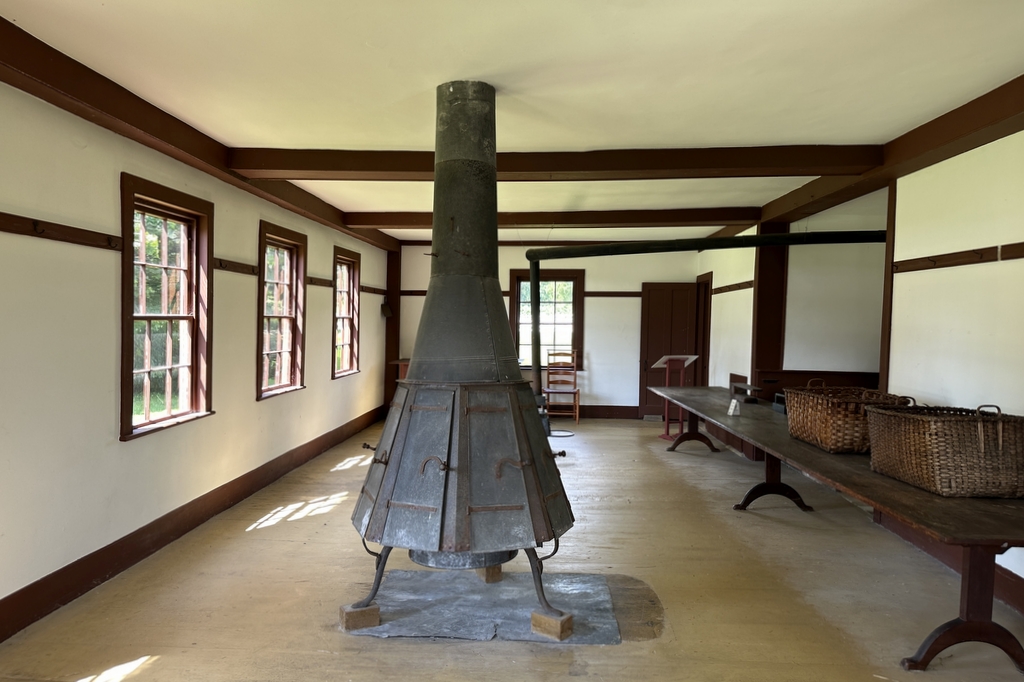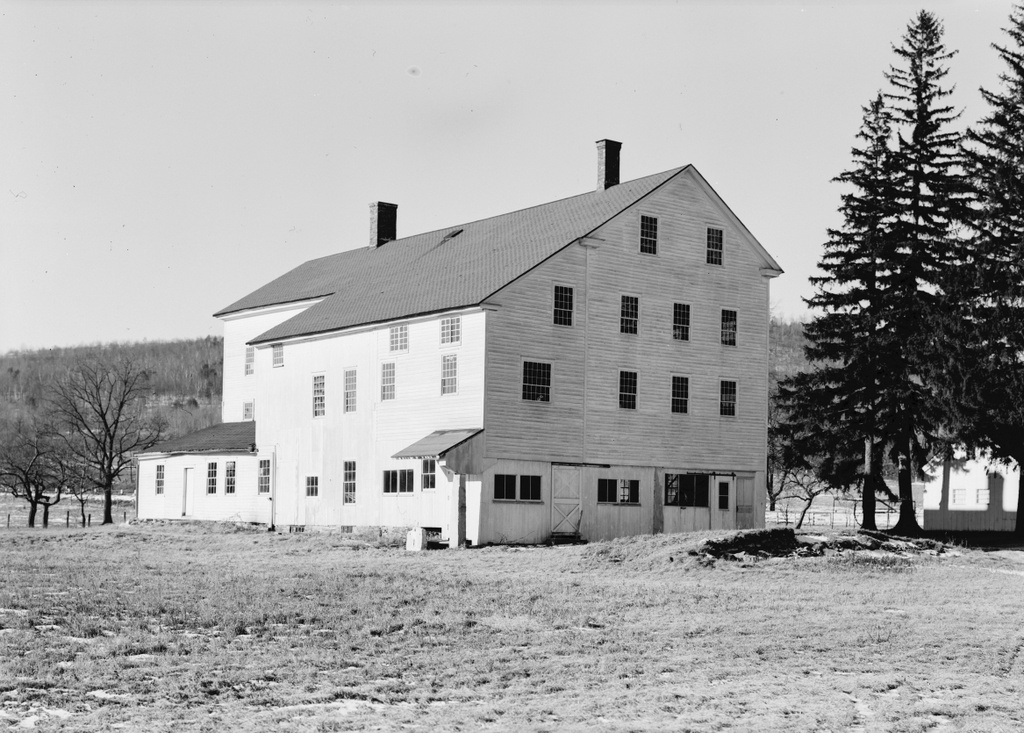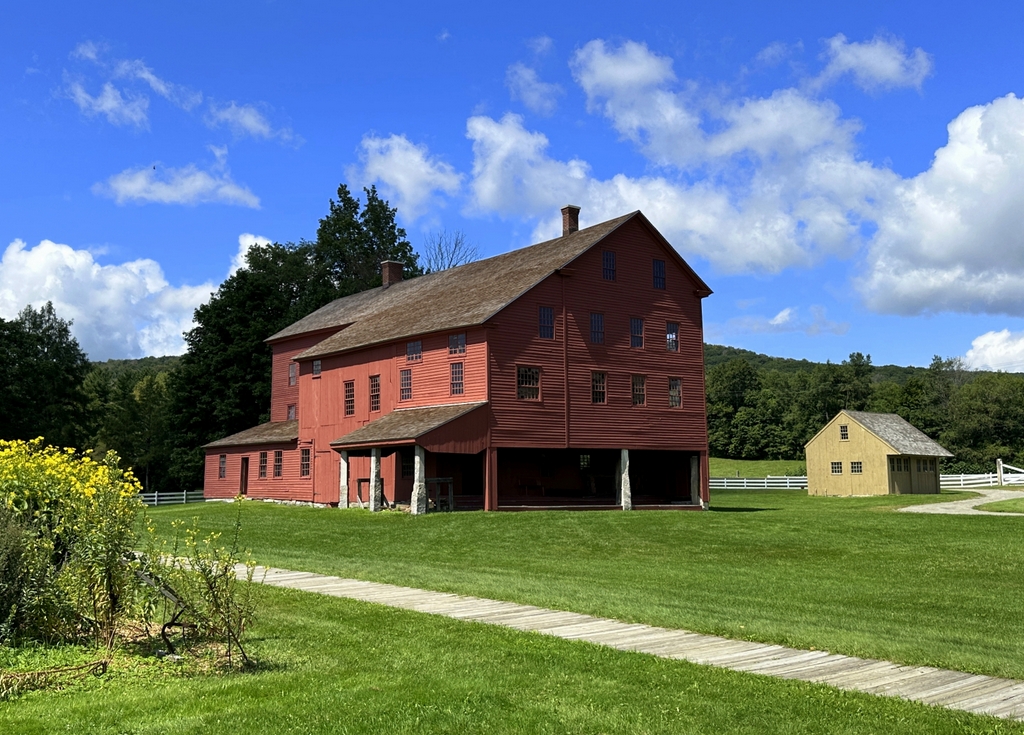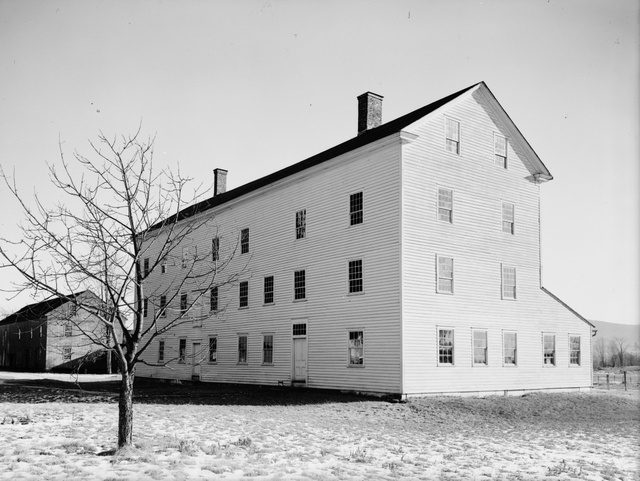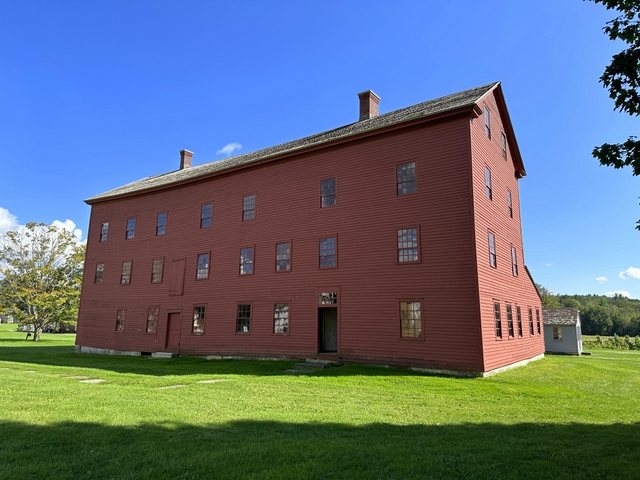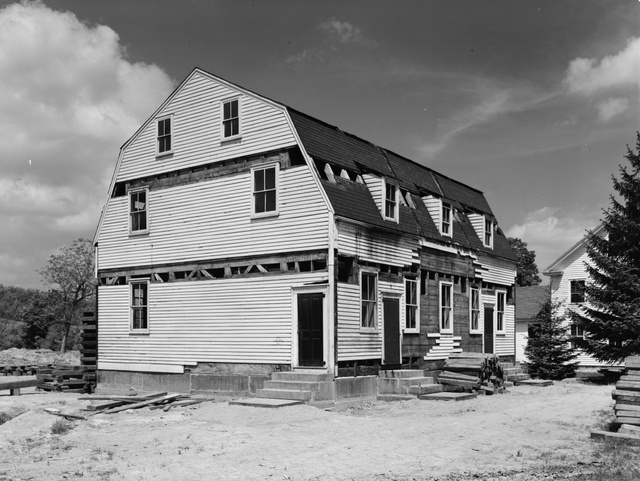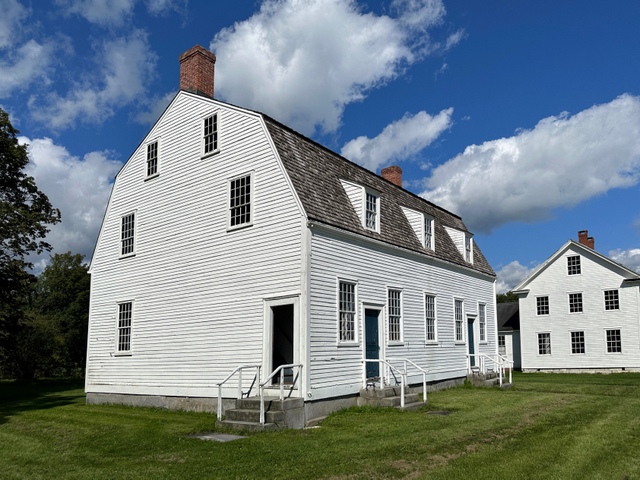The wash room at the laundry and machine shop building at Hancock Shaker Village in 1931. Image courtesy of the Library of Congress, Historic American Buildings Survey Collection.
The room in 2023:
This room is located on the first floor of the laundry and machine shop at Hancock Shaker Village. It was here that women in the Shaker community would wash garments and other cloth items, which would then be brought upstairs to dry. From there, the dry clothes would be returned to the first floor, where other women would iron them in the adjacent ironing room.
Although today they are often conflated with the Amish, the Shakers were not opposed to technology. On the contrary, Shaker communities are generally credited with a number of important technological advances during the 19th century, including developing early washing machines. Part of this was because the communal nature of the Shaker villages. Because they all lived and worked together, they could take advantage of economies of scale and develop machinery that would not be practical for most individual families.
Here in Hancock, the laundry facilities were located on the west side of this building, which housed the machine shop on the east side. Both the laundry and the machine shop utilized the same water source, with a turbine that powered the machinery here. This made the laundry much more efficient than washing everything by hand, which helped keep up with the needs of the community that, during the mid-19th century, had several hundred members.
The first photo was taken in 1931, when the Shaker community was still active here. As shown in the photo, the floor of the room was marble, which slope upward at the walls. There are also several drain holes in the floor. The equipment in the first photo includes a washing machine in the distance against the far wall, which appears to have been powered by the water turbine via a belt.
The Shaker community here in Hancock ultimately closed in 1960 amid declining numbers, and many of the buildings have since been preserved Hancock Shaker Village, an open-air museum. The laundry and machine shop building is still standing, although the equipment here in the wash room is somewhat different from the first photo. This may have been done in order to interpret the room as it would have looked during an earlier time period, since most of the items here appear to date back to the 19th century. Overall, though, it is still easily recognizable from the first photo, and it provides a good illustration of how the Shakers utilized technology in order to meet the needs of their communities.

